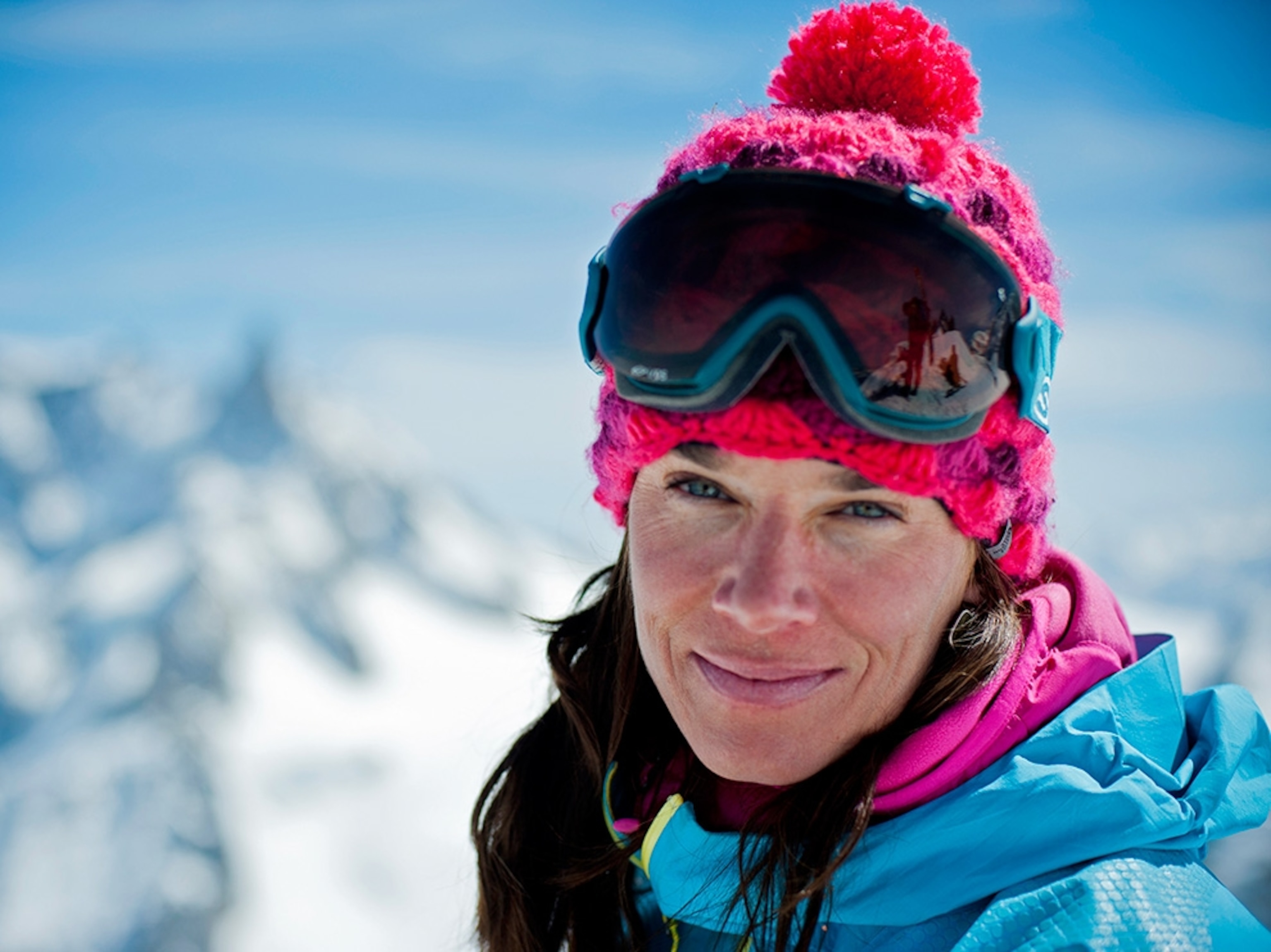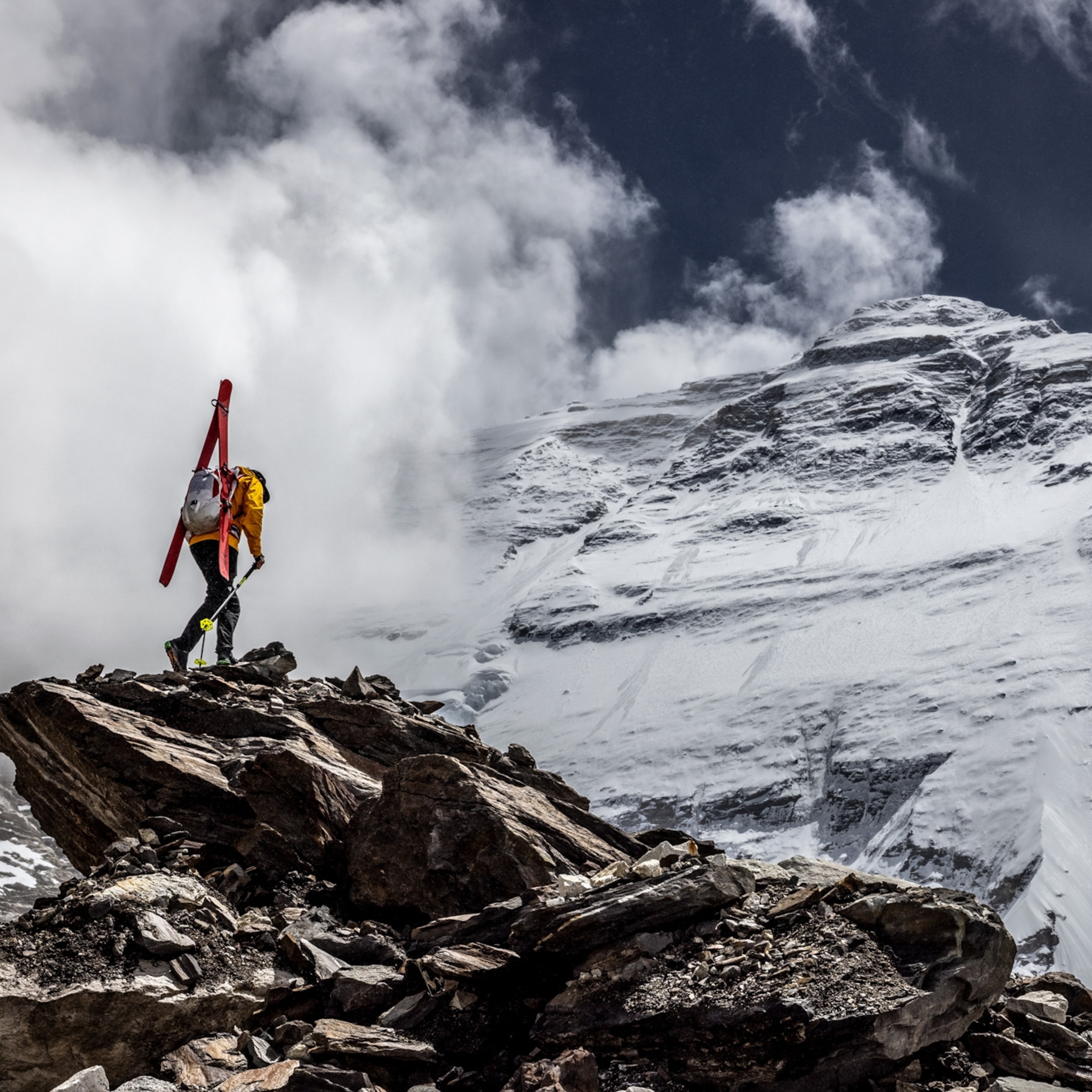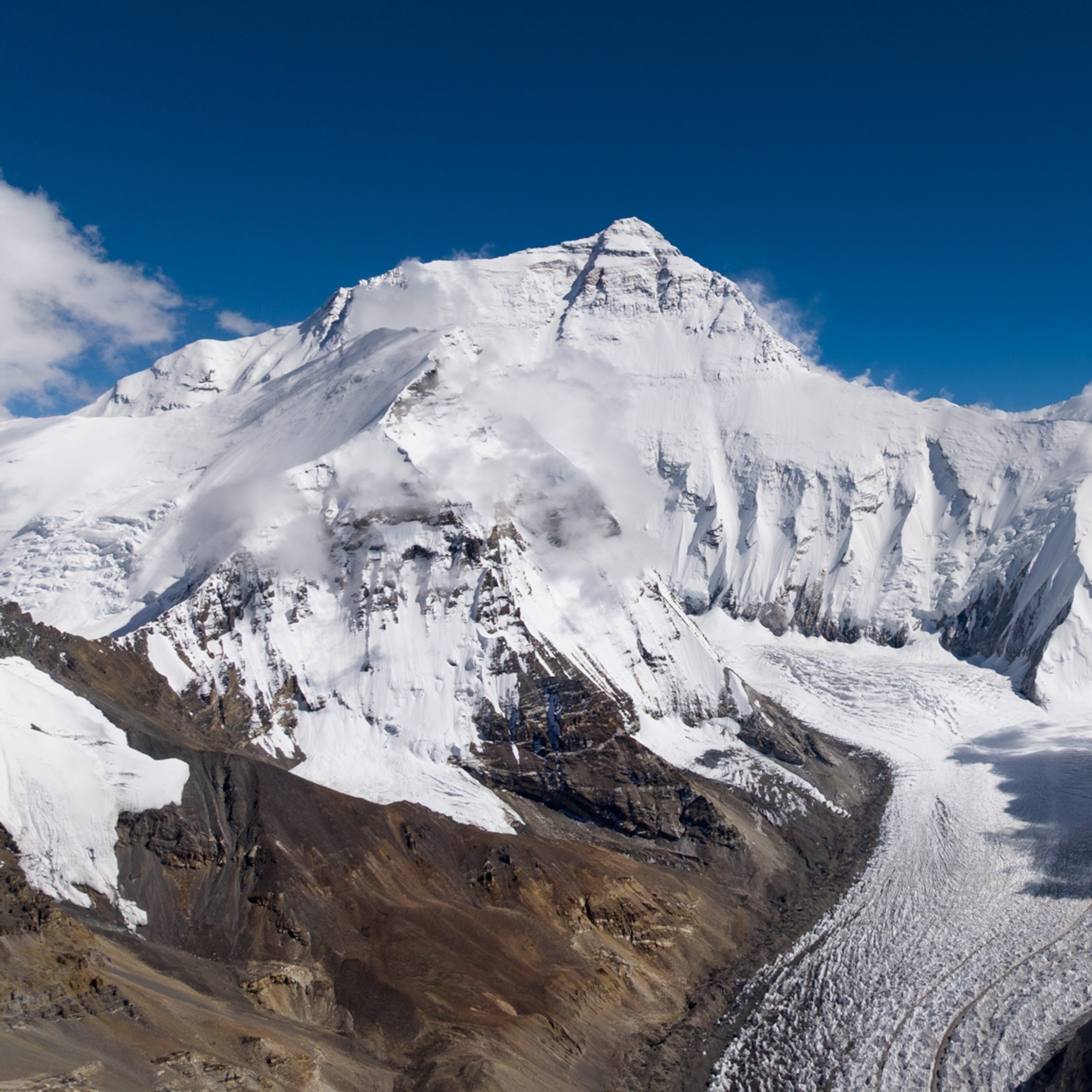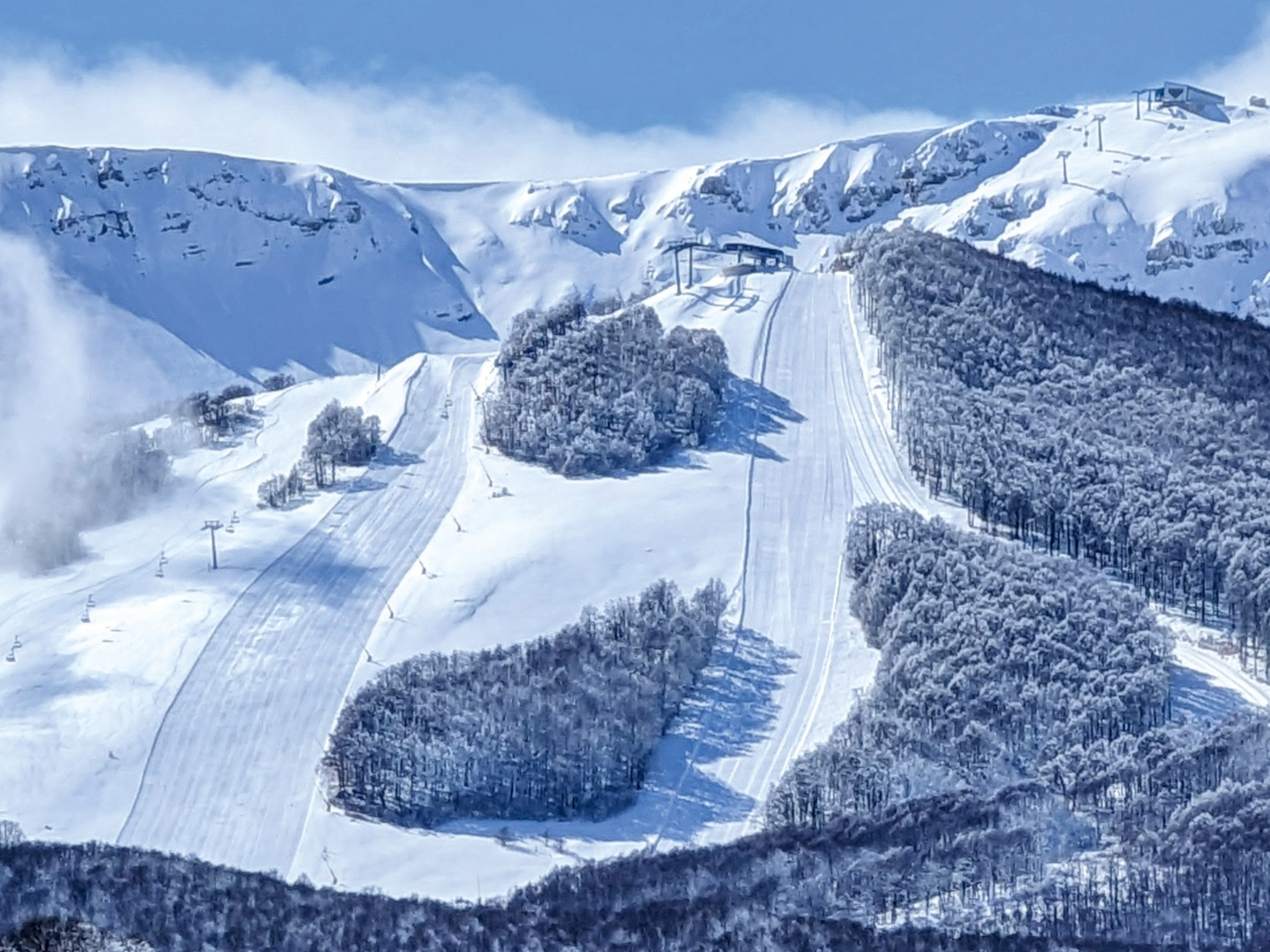
Ski Mountaineer Kit DesLauriers
A world-class ski mountaineer goes from extreme summits to extreme science in the Arctic wilderness.
“If anything went wrong, there was no way that a rescue could get to us that day, and there was a storm moving in the next day,” remembers ski mountaineer Kit DesLauriers.
DesLauriers and her team were ten hours into their ascent of Mount Chamberlin in Alaska’s Arctic National Wildlife Refuge (ANWR), 300 miles from the nearest airport. The snow was unconsolidated, making them sink to their bellies with every step. Loose rocks threatened them from above. They were highly exposed, and they weren’t even sure if the ridge they were on led to the summit.
“We were so far deep in this remote place—which is exactly what I asked for,” she says.
The climb was part of a two-week expedition in spring 2014, during which DesLauriers teamed up with Ph.D. glaciologist Matt Nolan of the University of Alaska Fairbanks, photographer Andy Bardon, and alpinist Don Carpenter to meld science with adventure. The team had three goals: to climb and ski Mount Isto and Mount Chamberlin carrying a ten-pound differential GPS unit the size of a 20-liter backpack; to determine which of the two mountains is the highest in the ANWR; and to test the accuracy of a new method of measuring glacial retreat.
DesLauriers, who grew up Nordic skiing in farmers’ fields in New England, is widely regarded as one of the best ski mountaineers in the world. In 2006, the East Coast native became the first person to ski down the Seven Summits (the highest peaks on each continent). In 2010, DesLauriers made her first trip to the ANWR to make the first known ascent of Mount Isto and ski out across the coastal plain.
“It was not an environmental or politically based expedition; it was pure exploration. I wanted to go someplace really deep that would feed that need for the wilderness in me,” DesLauriers explains.
A chance encounter on that first trip to the Arctic set her on a new course for a different breed of adventure. She met Nolan waiting on the gravel airstrip for their respective flights into ANWR. DesLauriers asked him what she could expect to see in terms of climate change.
“He put this Ph.D. dissertation into a few minutes,” DesLauriers remembers. “I was captivated. I loved the way that he could distill that down for us. We kept in touch, and he asked me to come back and help him at his research station for another project.”
DesLauriers returned in 2012 to assist Nolan with his research on the McCall Glacier. The ice-radar technology Nolan used at the time to measure the thickness of the glaciers required that someone remain on the ground to collect data. Not a climber himself, he needed experienced mountaineers to collect measurements for him on hard-to-reach glaciers in harsh conditions, with temperatures as cold as minus 40ºF. DesLauriers and her team, including skier Kasha Rigby and photographer Ace Kvale, made it to the designated sites and attempted to collect the data, but the technology proved too complex for the nonscientists.
“I'm not sure if we stepped on the antennae or what,” DesLauriers jokes, “but I don't think he ever got any good data from us, hard as we tried. That just fed his continued quest to try and find a better way to measure the glaciers up there.”
Nolan returned to the Lower 48, got his pilot’s license, and developed a method of measuring glaciers from the air—a form of aerial photogrammetry—that would eliminate the need for climbers on the ground. This past year, DesLauriers returned to help him confirm the accuracy of his method by using the differential GPS, a trusted device in the scientific community, to measure the location and elevation of particular points that Nolan could then compare to the results he got using his new method.
“We can now make much better maps with much lower cost equipment much more quickly,” says Nolan. “We can measure changes as small as a few centimeters, whether due to glacier change, coastal erosion, permafrost melt, or river scour.”
The team also succeeded in climbing and skiing both mountains. Because their scientific measurements on the summits produced less than four inches of variability to the airborne method, they were able to confirm both the accuracy of the airborne method as well as establish that Mount Isto is over seventy feet higher than Mount Chamberlin, which was previously thought to be the highest mountain in the U.S. Arctic. In doing so, DesLauriers demonstrated the possibilities when adventurers and scientists team up together.
“In terms of being conclusive about peak elevations, there is no substitute for sticking a GPS on top,” says Nolan. “Personally, I would not have gone there.”
—Jen Altschul
THE INTERVIEW
National Geographic Adventure: What is it that keeps drawing you back to the National Arctic Wildlife Refuge?
Kit DesLauriers: It's the size of South Carolina, it's roadless, and it's trailless. There's not a bridge. There's not a trailhead. There's not a sign. It's natural, pure, raw wilderness. It's a place where man remains a visitor, what I can only describe as a completely intact ecosystem, still the same as it was when our ancestors crossed the Atlantic. When that plane took us in there, there were polar bear tracks crisscrossing the valley. It was the deepest silence I've ever experienced. And it's a remarkable sensation to go someplace that most people would think of as inhospitable and dangerous and feel comfortable there.
NGA: What sort of wildlife did you see?
- National Geographic Expeditions
KD: We saw wolves, wolverines, Dall sheep, arctic foxes, ptarmigans, and owls. The polar bears had just left for the spring, which was good fortune, and the grizzly bears were just waking up for the spring, which was double good fortune.
NGA: What was the most challenging part of the expedition?
KD: [When] I approached the summit [of Isto], I realized how large of a wind cornice there is along that whole summit ridge. I was frustrated and disappointed at first, because I wasn't going to be able to just stand in a perfect place and say, “This is absolutely the summit.” I just couldn't risk it and go too close to the edge and be another entry in the American Alpine Club’s annual accidents book. I had to walk this line of making the right, safe decision, and getting the best science possible. Then I tried to get out my tripod, and I almost cried, because the quick-release was frozen solid, and I couldn’t get it off the pack. But it's just one of those things—life in the mountains, you have to stay flexible and creative. Of course, it happened on top of Chamberlin as well.
NGA: What’s next?
KD: Making sure that our kids get up to the Arctic National Wildlife Refuge—it may be a simple float trip. And another big ski expedition. I'm not sure where. Someplace bigger that I haven't been willing to go to since I've had kids.
NGA: Do you think that you'll find a way to merge science and adventure again?
KD: I definitely see that in my future. If I'm just going to put this overarching theme on decades of our life: the 20s, we're figuring out who we are; the 30s are about developing skill sets. I'm seeing the 40s as striving to answer the question of, How do we fit into this world and into this landscape around us?







